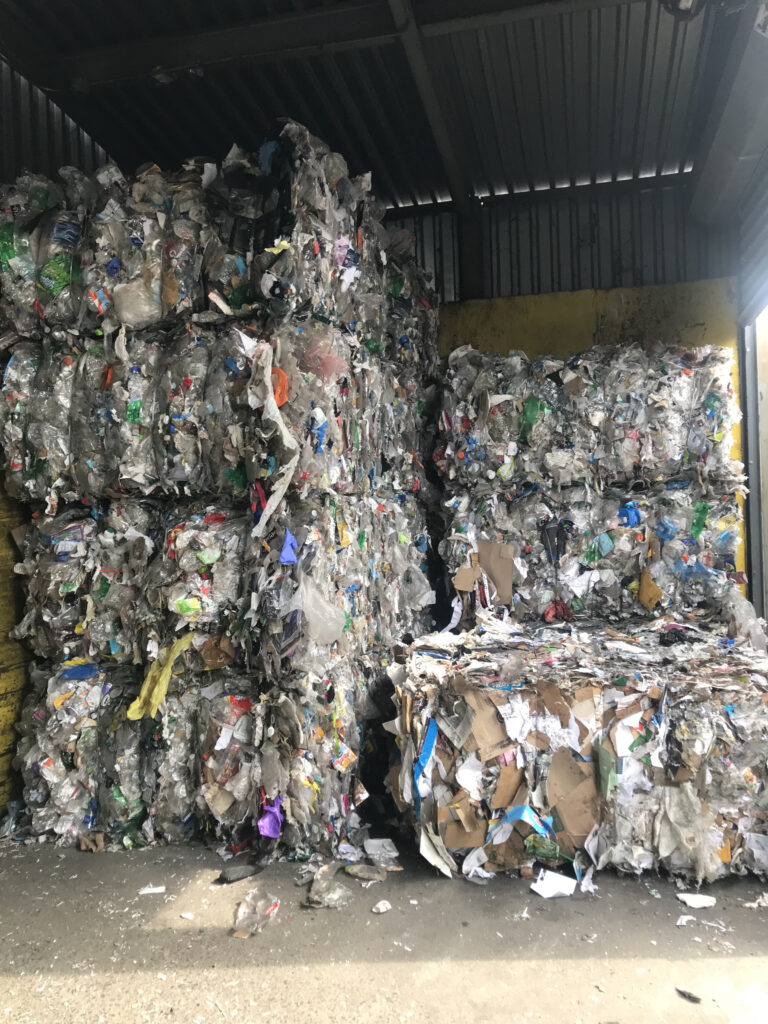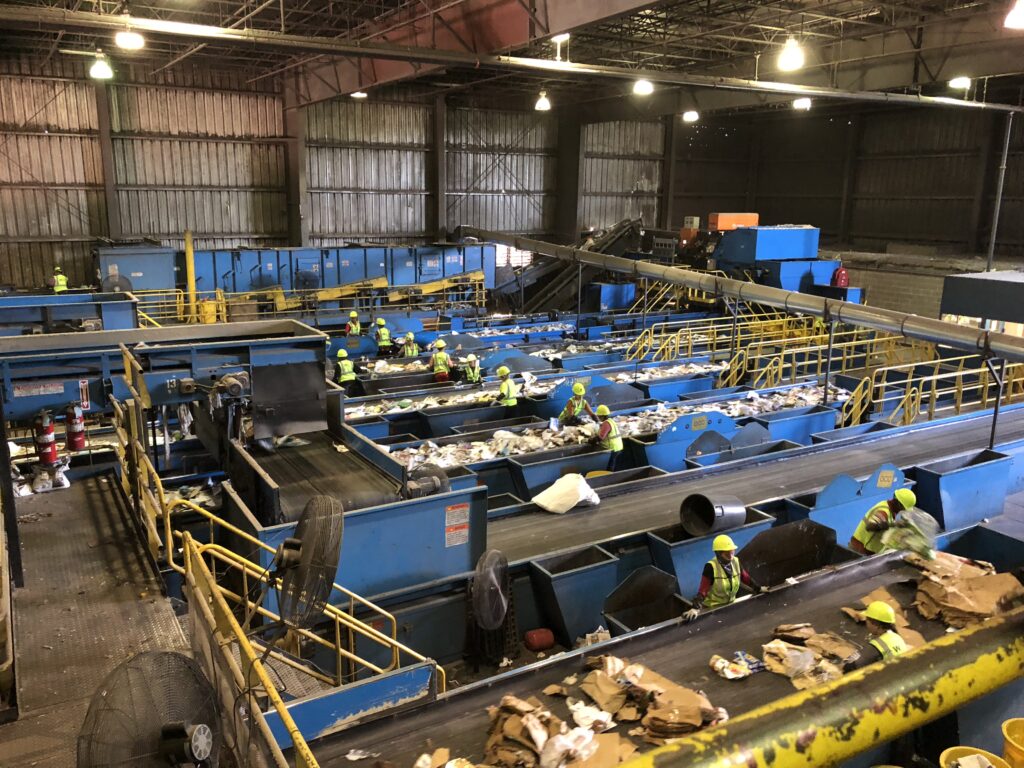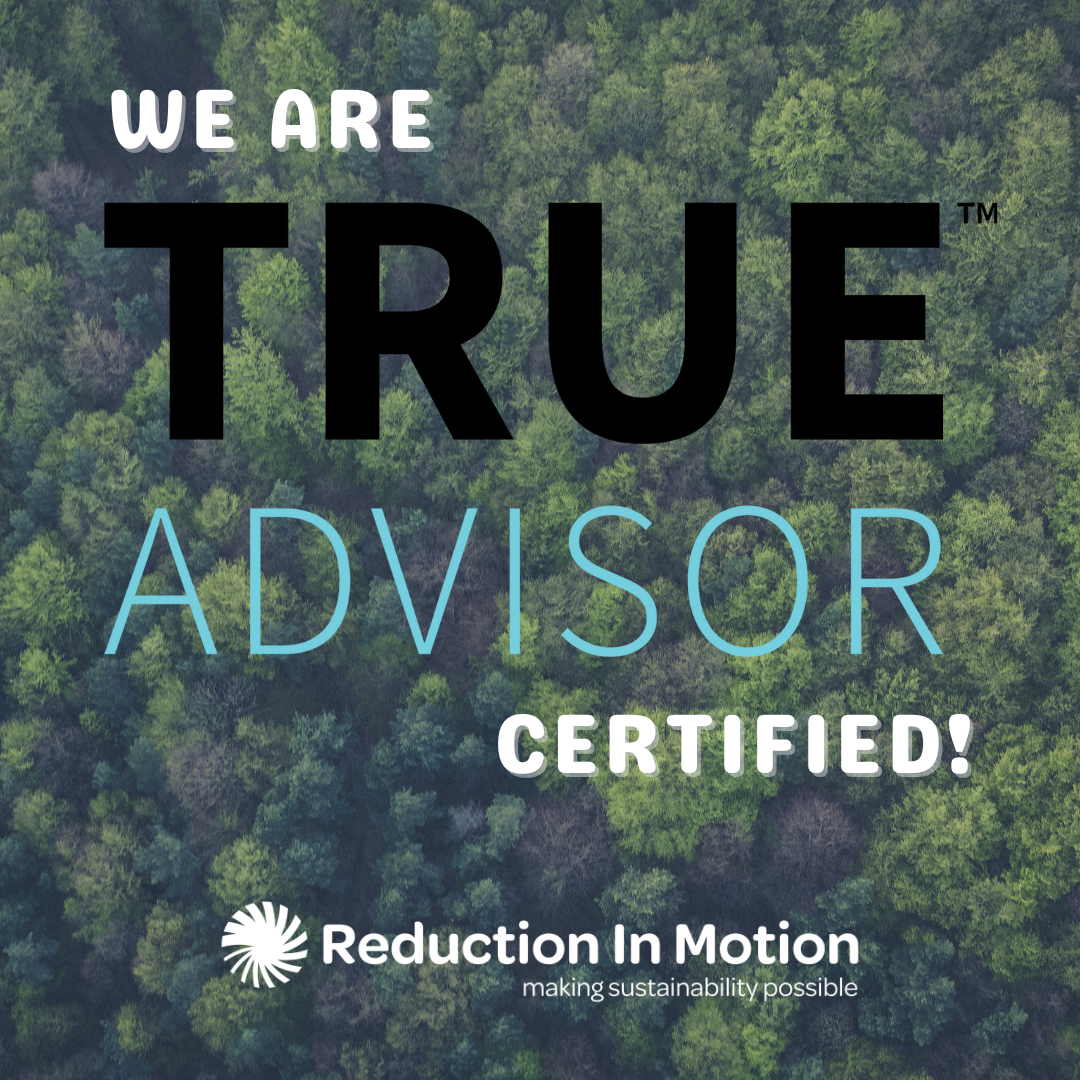Where Does your Recycling Really Go? (Pt. 1)
Welcome to Part 1 of our How to Recycle Like a Pro mini-series, celebrating America Recycles Day. Each November, this day reminds us to recommit to reducing waste and recycling right — but even the best intentions can backfire when recycling is misunderstood.
This week, we sat down with Bill Griffith, President and Head Trash Talker at Reduction In Motion, to uncover what really happens after your recycling leaves the bin and why knowing what not to recycle is just as important as knowing what to recycle.
Where Does Recycling Really Go?
After your bin is emptied, those bottles, cans, and cardboard boxes don’t go straight to a factory to be reborn. First, they’re collected and often taken to a transfer station, then sent to a Material Recovery Facility (MRF). This is the first major stop in the recycling journey.
At the MRF, materials are sorted, screened, and separated into marketable commodities like paper, metal, and certain plastics. Once baled, these materials are sold to processors and manufacturers to be turned into new products. This could be everything from new boxes, to polyester clothing, shoes, and plastic decking.

Why Good Intentions Can Go Wrong
Just because something feels recyclable doesn’t mean it is. Wish-cycling or “wishful recycling,” as Bill puts it, happens when people toss in items they hope can be recycled. These are common items like plastic clamshells, Styrofoam, toys, or even plastic bags.
The problem? These items can’t be processed through most MRFs. In fact, they can jam equipment, contaminate valuable materials, and even cause fires (especially with batteries).
“If it’s not accepted locally,” Bill says, “it’s not being recycled. It’s just creating more work — and sometimes more waste.”

Contamination Costs Everyone
When the wrong materials end up in recycling bins, they can cause an entire truckload to be rejected and sent to landfill. For businesses, that contamination can also mean hefty fines, sometimes several times the cost of a normal pickup.
Even well-meaning recycling efforts can become wasteful if the focus is on quality over quantity. Clean, properly sorted recycling has a much better chance of becoming something new.
How to Recycle Right
- Know your MRF: Check with your municipality or hauler to confirm what’s accepted locally, as it varies by region.
- Keep it simple: Boxes, paper, bottles, cans are widely accepted in recycling.
- Keep it clean: Empty and rinse containers before tossing them in.
- Skip the “extras”: Plastic bags, Styrofoam, batteries, and glossy wrapping paper don’t belong in curbside recycling.
- See it firsthand: Schedule a tour of your local MRF to see the recycling process up close. Tt’s one of the best ways to understand how your materials are really managed.
Final Thought
As Bill sums it up: “We need to focus on quality over quantity. Don’t overfill your bin with trash and call it recycling. The cleaner the stream, the better the outcome.”
Recycling doesn’t end at the bin… it begins at the bin. This America Recycles Day, take a closer look at what happens next.
Continue onto Part 2 where we’ll focus on transparency and how to ask the right questions of your hauler. Understanding how your materials are handled after collection builds trust, accountability, and a stronger recycling system from start to finish.

Our team of sustainability and waste consultants work together to develop content for our site. Contact us to learn more about something we’ve written about or would like us to focus on in the future.


